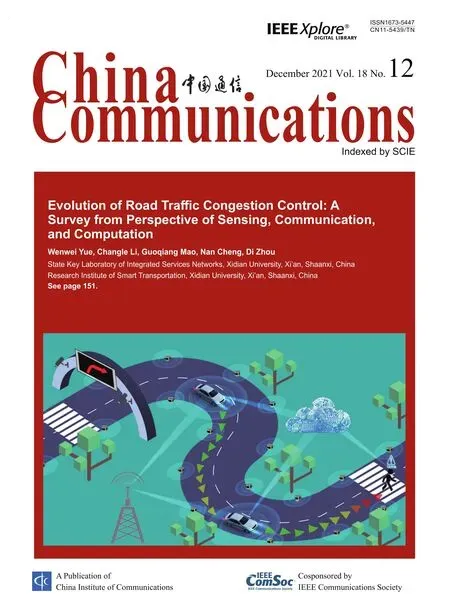Intelligent Spectrum Management Based on Radio Map for Cloud-Based Satellite and Terrestrial Spectrum Shared Networks
Ximu Zhang,Min Jia,Xuemai Gu,Qing Guo
Communication Research Center,School of Electronics and Information Engineering,Harbin Institute of Technology,Harbin 150080,China
Abstract: Cloud-based satellite and terrestrial spectrum shared networks (CB-STSSN) combines the triple advantages of efficient and flexible network management of heterogeneous cloud access(HCRAN),vast coverage of satellite networks,and good communication quality of terrestrial networks.Thanks to the complementary coverage characteristics, anytime and anywhere high-speed communications can be achieved to meet the various needs of users.The scarcity of spectrum resources is a common problem in both satellite and terrestrial networks.In order to improve resource utilization, the spectrum is shared not only within each component but also between satellite beams and terrestrial cells,which introduces inter-component interferences.To this end,this paper first proposes an analytical framework which considers the inter-component interferences induced by spectrum sharing (SS).An intelligent SS scheme based on radio map (RM) consisting of LSTM-based beam prediction (BP), transfer learning-based spectrum prediction (SP) and joint non-preemptive priority and preemptive priority (J-NPAP)-based proportional fair spectrum allocation is than proposed.The simulation result shows that the spectrum utilization rate of CB-STSSN is improved and user blocking rate and waiting probability are decreased by the proposed scheme.
Keywords: cloud-based satellite and terrestrial spectrum shared networks; spectrum management; interference analysis;spectrum utilization rate
I.INTRODUCTION
In order to meet the ever-increasing diversified business needs of users,future wireless mobile communications will be composed of multiple wireless access technologies that complement each other[1].Ground mobile communications cannot provide services for terminals in remote areas, mountainous areas, rivers,seas, and air due to geographical restrictions.Satellite communication has the advantages of large coverage and not subject to the constraints of the natural environment, and can provide all-time seamless and all-regional seamless communication service [2].However,due to the on-board limited resources,satellite and terrestrial spectrum shared will cause severely co-frequency interference.A method to evaluate the interference level in the integrated satellite and terrestrial network is proposed and used to analyze the interference problem between the satellite subsystem and the ground subsystem under two spectrum sharing modes in [3].Literature [4] analyzed the feasibility of satellite-ground spectrum sharing.The simulation results show that when the traffic of the terrestrial network is restricted to ensure that it will not cause intolerable interference to the satellite, the satellite and terrestrial spectrum sharing is feasible.Literature [5]proposed a satellite-ground integrated network architecture based on the terrestrial Long Tern Evolution(LTE)protocol.Based on seven-color frequency reuse(SCFR),the ground network capacity and the interference level of the ground network to the satellite uplink is analyzed[6].It is relatively simple to coordinate the spectrum sharing between satellite and ground through frequency planning,but the spectrum utilization rate is not high.In order to ensure that the interference between the satellite and the ground does not exceed the threshold, a larger“exclusive zone”is often required,which will greatly reduce the spectrum utilization[7].Therefore, the satellite and terrestrial spectrum sharing scheme based on the“exclusive zone”will further reduce the available frequency resources of the terrestrial network, and even no resources are available.In addition,advanced high-throughput satellites adopt full-frequency multiplexing scheme[8]in order to increase the capacity of satellites.However, the interbeam interference of this scheme is relatively strong.
Based on the Friis transmission equation, satellite and terrestrial soft frequency reuse (STSFR) scheme is proposed in [9].This scheme improves network resource utilization through spatial isolation.Since the above static spectrum sharing scheme cannot make full use of the spare frequency, a dynamic spectrum sharing method for terrestrial networks is proposed in[10].The Cognitive Radio for Satellite Communications (CoRaSat) project was launched in Europe in 2013, which aims to introduce cognitive radio technology into satellite systems to improve spectrum utilization[11].On this basis,a cognitive radio based dynamic spectrum sharing network power allocation algorithm is proposed in[12]considering the perfect and imperfect channel estimation.Moreover,a power control algorithm for reverse-mode satellite and terrestrial spectrum sharing networks is proposed in[13],which realizes the dynamic spectrum sharing based on the interference threshold constraint between the downlink ground network and the uplink satellite network.However,it brings more intense mixed co-channel interference.Furthermore, a spectrum sharing strategy based on beam hopping for LEO and GEO is proposed in [14].This scheme improves the throughput of the network by designing a beam-hopping beam pattern to avoid interference,but it cannot share spectrum between satellites and grounds.To this end,mobile operators have deployed a large number of sensor nodes.A dynamic spectrum sharing method based on wireless electromagnetic environment is proposed by deploying a large number of sensor nodes to the ground network in [15].This scheme effectively solves the impact of hidden terminals on spectrum sharing at the cost of increasing computational complexity.However, the existing algorithms do not make full use of network spectrum resources from the perspective of time and space, and the spectrum utilization rate is not high.Therefore,in order to improve the efficiency of spectrum utilization and meet the urgent needs of high-speed information and communication broadband,the study of spectrum management scheme for STSSN can effectively increase spectrum utilization and fair spectrum allocation.
The main contributions are summarized as follows:
(1)Considering the satellite-terrestrial FDD normal mode, an intelligent spectrum sharing method based on RM for CB-STSSN is proposed and has robust performance in terms of spectrum utilization.Considering traditional SCFR scheme ignores the bandwidth requirements are unevenly distributed among numerous spot beams,beam prediction can reduce the second-order difference between the bandwidth allocated and the bandwidth actually required by the spot beams.Therefore, the overall resource utilization of the beam cluster is improved.
(2) Considering that tidal phenomena, the spectrum prediction can proactively acquire future spectrum statuses.Different resources are allocated to different types of users according to the prediction results.Thus,spectrum prediction can effectively reduce the blocking rate.
(3)Based on beam prediction and spectrum prediction, a J-NPAP spectrum allocation algorithm is proposed in our work.While ensuring the priority of firstclass services and the fairness between users of the same priority,the simulation results show that the proposed method effectively improve spectrum utilization,which can realize the spectrum management from satellites to beams and then from frequency bands to users.
The rest of the paper is organized as follows.Section II introduces the CB-STSSN system model,interference model and performance analysis.Section III describes the proposed satellite and terrestrial spectrum sharing scheme based on RM including beamprediction, spectrum prediction and spectrum allocation.In Section IV, the simulation results are presented and discussed.Finally, Section V concludes this paper.
II.SYSTEM MODEL AND PERFORMANCE ANALYSIS
2.1 System Model
In CB-STSSN,satellites and ground components sharing the same frequency band can effectively alleviate the problem of spectrum scarcity and greatly improve spectrum utilization.Therefore,CB-STSSN will play a vital role in future wireless systems.CB-STSSN,as shown in Figure 1,has the following advantages:
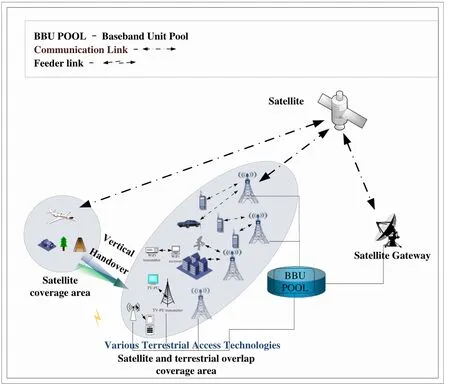
Figure 1. The system model of STSSN.
(1) Improve system capacity and QoS (quality of service): The performances of single system are limited.While anytime and anywhere high-speed communication can be achieved in CB-STSSN to meet the various needs of users, thanks to the complementary coverage characteristics;
(2) Achieve complementary advantages: CBSTSSN combines the triple advantages of efficient and flexible network management in Baseband Unit(BBU)Pools,vast coverage of satellite networks,and good communication quality of terrestrial networks;
(3)Reduce operating costs: Due to the wide coverage of the satellite system,it can provide services at a lower cost in sparsely populated areas;
(4) Improve resource utilization: The resource utilization of the satellite and terrestrial is different.Generally speaking,satellite network spectrum utilization is relatively low, the scarcity of terrestrial network spectrum resources is even more severe.Therefore,satellite and ground spectrum sharing can effectively alleviate the problem of spectrum scarcity and greatly improve spectrum utilization.
As shown in Table 1, the degree of spectrum integration can be divided into five levels.Te4 indicates that the physical layer chipsets of the satellite and ground terminal are integrated.Te5 indicates that the antennas of the satellite and the ground terminal are integrated.

Table 1. Analysis of spectrum integration degree.
Sp0 means that the satellite and the ground system work in different frequency bands.The satellite system uses the MSS frequency band,and the ground system provides services in a dedicated ground frequency band.Due to the scarcity of spectrum resources,the use of Sp0 integration is wasteful, so the United States and Europe have allowed terrestrial networks to reuse licensed satellite frequency bands.However,traditional hybrid satellite-terrestrial network cannot achieve high-level spectrum sharing, the satellite and ground static or dynamic resource sharing technology in CB-STSSN becomes possible.
2.2 Interference Model
The co-channel interference between the satellite and the terrestrial in CB-STSSN limits the spectrum utilization.The co-frequency interference link between the ground network and the satellite network of CBSTSSN is shown in Figure 2.
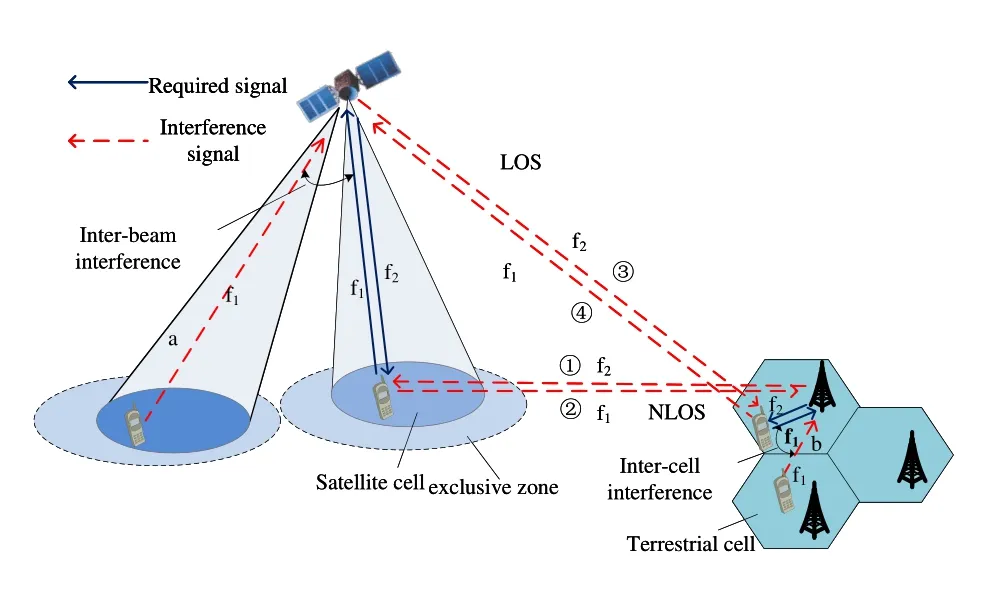
Figure 2. The interference model of STSSN.
The total interference in CB-STSSN can be expressed as

whereIsat,u(i,k)andIt,u(i,k)represent the interference received by satellite and terrestrial users,respectively.The signal-to-interference and noise ratio of the satellite can be expressed as
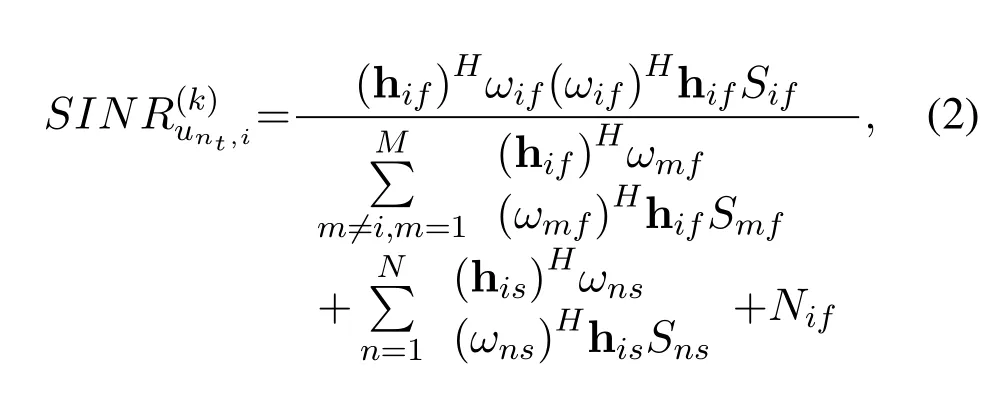
where terrestrial BS downlink channel matrix for the i-th user is represented by hifand satellite downlink channel matrix for thei-thuser is represented by his.Terrestrial BS downlink beamforming vector for thei-thuser are represented byωif.The transmit beamformer from the terrestrial BS to user equipmentmis denoted byωmf.The transmit beamformer from the satellite to user equipmentnis denoted byωnf.nifisthe receiver noise at terminali.
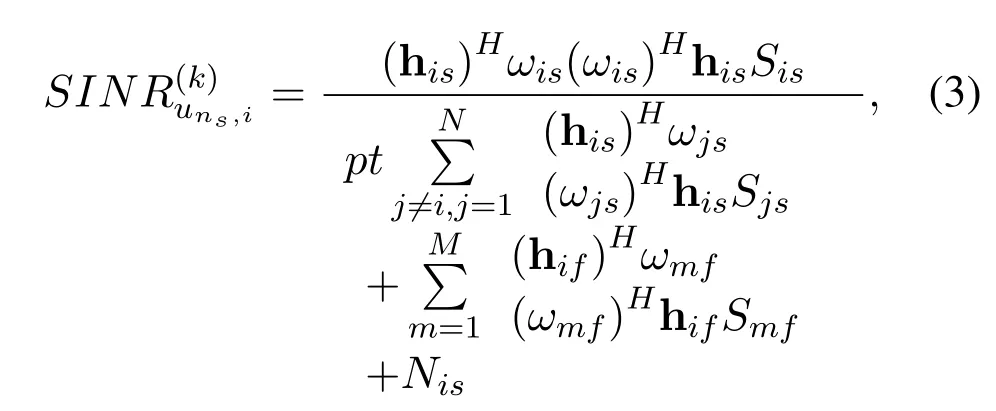
where terrestrial BS downlink channel matrix for the i-th user is represented by hifand satellite downlink channel matrix for thei-thuser is represented by his.terrestrial BS downlink beamforming vector for the m-th user are represented byωmf.The transmit beamformer from the satellite to user equipmentiis denoted byωis.The transmit beamformer from the satellite to user equipmentjis denoted byωjs.nisis the receiver noise at terminali.Take the FDD forward duplex mode as an example, the co-frequency interference between the ground network and the satellite network of CB-STSSN is shown in Table 2.
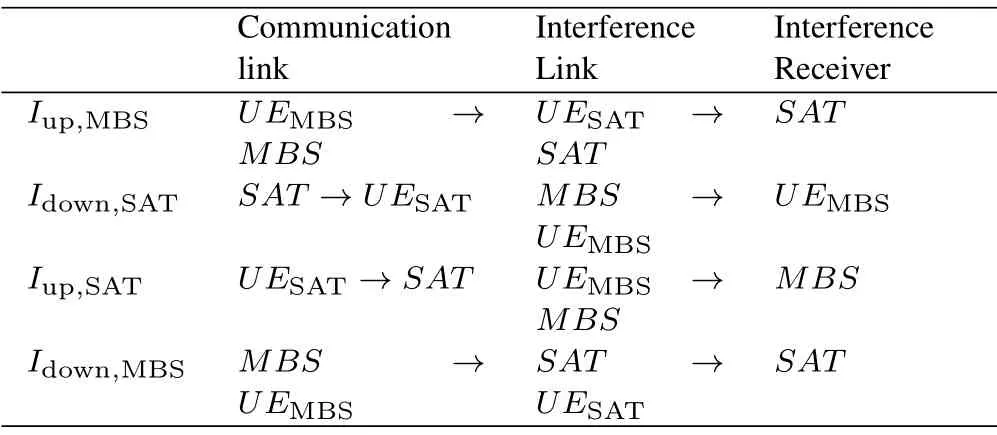
Table 2. Analysis of interference in the forward mode of satellite FDD and terrestrial FDD.
2.3 Performance Analysis
On thek-thshared channel, the packet transmission probability ofi-thuser can be expressed as


The collision probability of ground service can be expressed as

wheres=1,2,3...,S,t=1,2,3...,T.The collision probability between the satellite service and the satellite service, the collision probability between the ground service and the ground service,and the collision probability between the satellite service and the ground service,respectively,can be expressed as
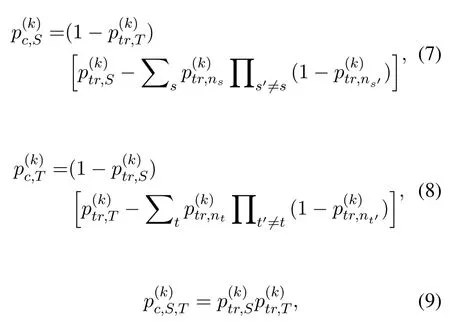
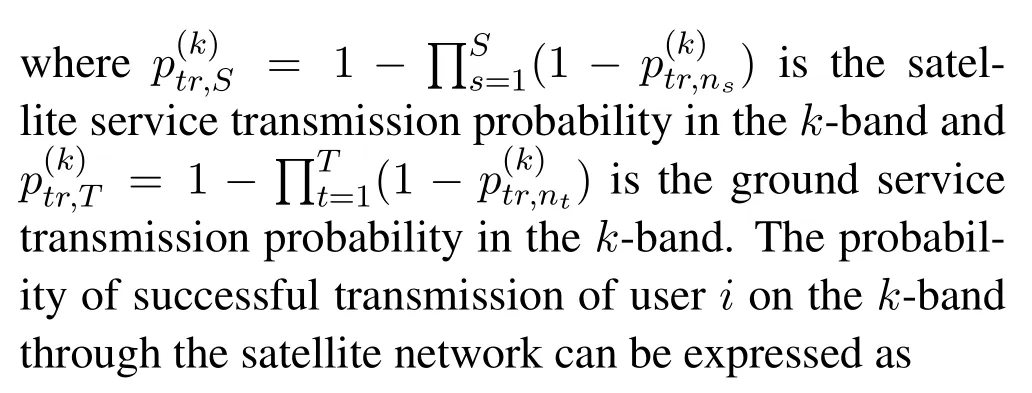

The probability of successful transmission of userion thek-band through the terrestrial network can be expressed as

Therefore, the average duration of a time slot in the shared frequency bandkcan be calculated as
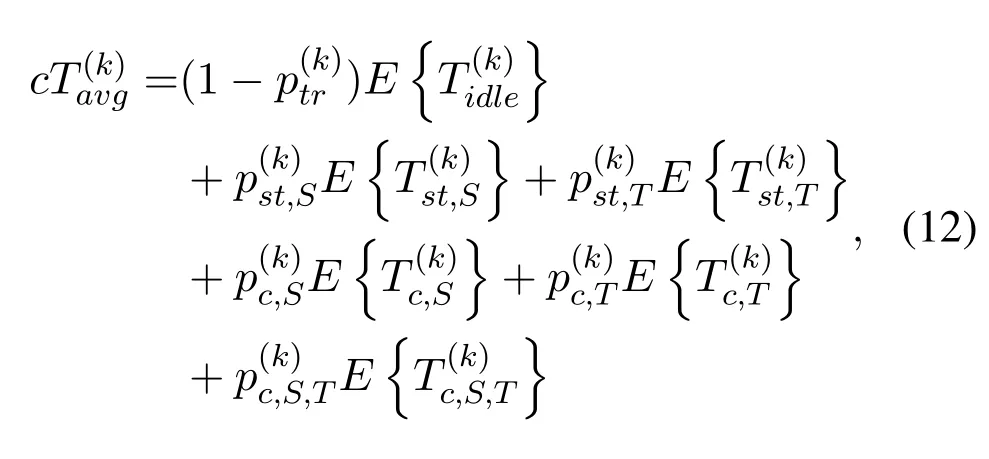
whererepresents the probability that the sharedkband is occupied,which can be expressed as

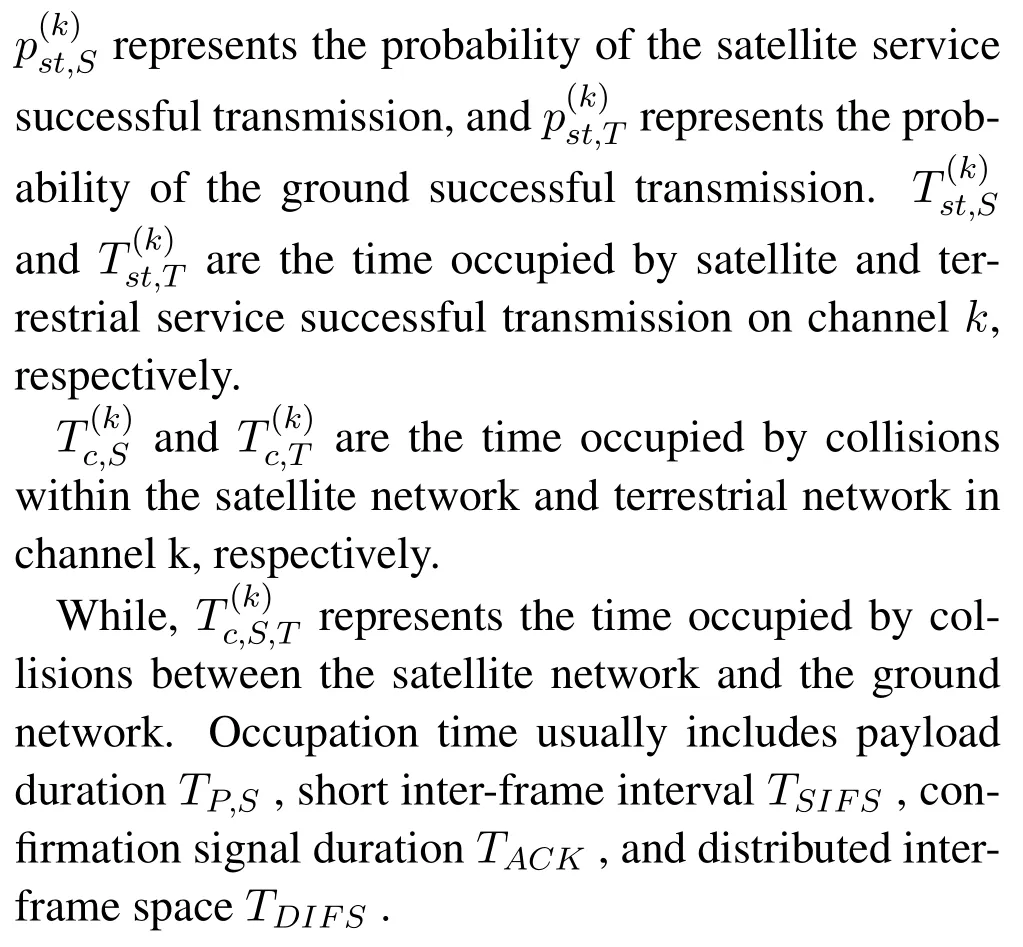
Therefore, the normalized throughput of the terrestrial network can be expressed as

The normalized throughput of the satellite network can be expressed as

whererepresents the average duration of successful transmission in the satellite network;represents the average duration of successful transmission in the terrestrial network.
Since satellite and ground sharek-band, the data transmission rate of the terrestrial network can be expressed as
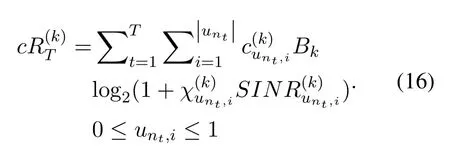
represents the time-sharing factor of terrestrial users on thek-band,andBkrepresents the bandwidth ofk-band.indicates the channel access factor.The data transmission rate of the satellite network in this frequency band can be expressed as

The normalized throughput of the system can be expressed as
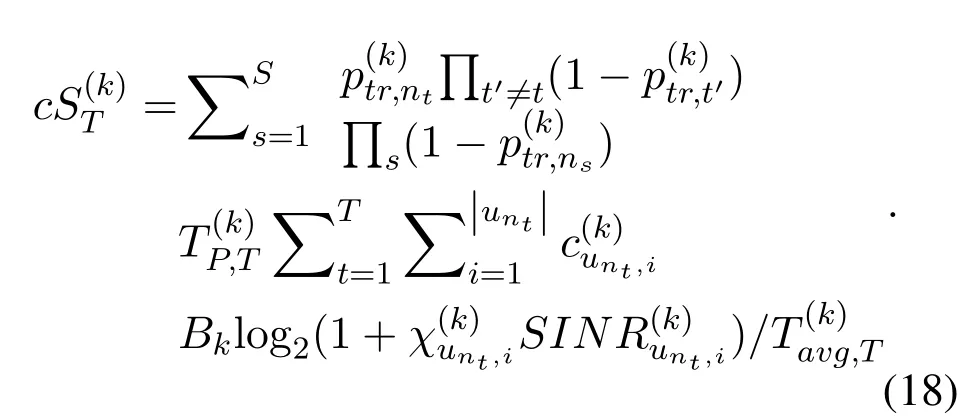
The deduction result shows that as the collision probability of a certain service increases, the corresponding transmission probability of other services under the same network increases.This further leads to a decrease in the probability of successful transmission of the service and a decrease in the system transmission rate.The derivation results also show that when the transmission probability of other services under the network increases, the collision probability of this service further increases.Therefore,the transmission rate of the system further drops,entering a vicious circle.Therefore, reducing the collision probability of the system by predicting the network status can improve the performance of the system.
III.PROPOSED SPECTRUM SHARING SCHEME BASED ON RADIO MAP
3.1 LSTM Based Beam Prediction
The entire frequency band is divided into seven equal parts in the traditional seven-color frequency reuse scheme, which ignores the different areas covered by different spot beams.However, due to the concentration of human settlements, traffic requirements under different beams are quite different.Because the traditional seven-color reuse scheme as shown in the Figure 3 ignores the difference in demand between beams,the resource utilization rate is low.This paper analyzes the traffic demand of the spot beam based on the periodic changes of time and position,and improves the bandwidth usage efficiency through beam bandwidth prediction, thereby avoiding unnecessary waste of bandwidth.
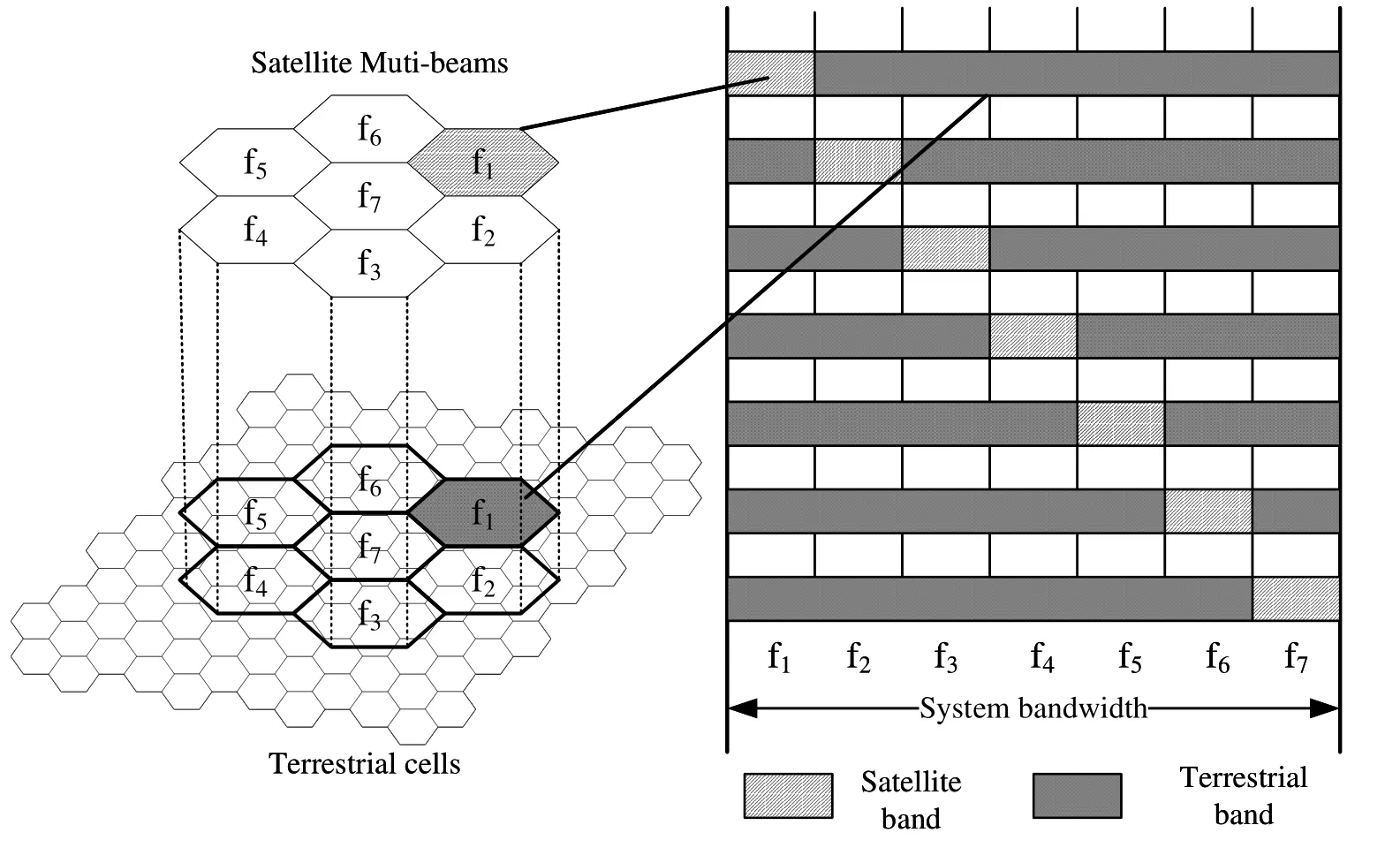
Figure 3. Seven-color Frequency Reuse of STSSN.
3.2 Transfer Learning Based Spectrum Prediction
The derivation results in Part C of Section II show that reducing the probability of collision can effectively increase the average transmission rate of CBSTSSN.The SP algorithm can proactively acquire future spectrum statuses.SP can effectively reduce the time delay by reducing the repeated application for resources by users.Therefore, effective and reasonable SP will bring significant benefits.Therefore, based on the trained beam prediction model, spectrum prediction is then performed through transfer learning.The radio environment map including beam prediction, spectrum prediction and spectrum allocation is shown in Figure 4.
3.3 J-NPAP Based Proportional and Fair Spectrum Allocation Criteria
Based on the Pyramid Priority Model proposed by the FCC, a J-NPAP priority model for CB-STSSN is shown in Figure 4.We assume thatL1(t)=hdenotes the number of users waiting in the queueL1 at timet,L2(t) =ldenotes the number of users waiting in the queueL2 andL3(t) =ndenotes the number of users waiting in the queueL3.I1(t) =i,I2(t) =jandI3(t) =kdenote the number of first-class, secondclass and third-class users that have been accessed to the network at timet, Therefore, J-NPAP can be expressed as
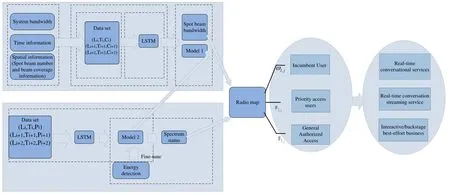
Figure 4. Spectrum management based on radio map.
1) The first-class users in the network are usually military communications users.Therefore, they have preemptive priority.When resources are scarce, if first-class users request to access the network,secondclass and third-class users are interrupted and return to the waiting queue;
2) Ifh= 0,n ≤N&l >0, second-class users are accessed to network based on proportional fairness criterion;
3) Ifh= 0&n > Norh= 0&l= 0, third-class users are accessed to network based on proportional fairness criterion.
Therefore,the balance factor N is to control the priority of the second-type users over the third-type users in J-NPAP when resources are scarce.First-class users always have preemptive priority.Whenn ∈[1,N],the second-class users have non-preemptive priority.Whenn ≤N,J-NPAP priority model is equal to the traditional priority model.
The average waiting time ofL2 andL3 in J-NPAP model is affected by the parameterN.The average waiting time for first-class users is the shortest.The average waiting time for the second and third-class users is related to the parameter N.Whenn < N,the J-NPAP model falls back to the traditional priority model.When n is large, the network congestion rate increases Therefore, we can compromise the network congestion rate and the priority of second-class users relative to third-class users by adjusting the parameterN.
Spectrum allocation between different class users in STSSN according to the proposed J-NPAP model.Compared with the round-robin algorithm, the Hungarian algorithm and the maximum carrier-tointerference ratio algorithm, the proportional fairness algorithm is adopted when allocating spectrum to users of the same priority.The proportional fairness algorithm can take into account the network throughput and the fairness between same class users and can be expressed as

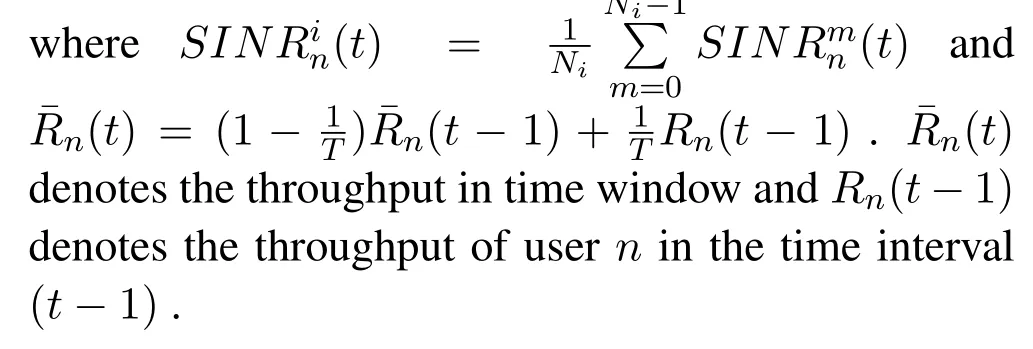
IV.SIMULATION AND ANALYSIS
The dataset used in this paper comes from part of the open data of the Telecom Italia Big Data Challenge[16].The simulation results show that as the average service rate increase, the blocking rates of the three schemes all have a certain degree of decline.As the user arrival rate increase,the network blocking rates of three algorithms rises.The blocking rate of the satellite and terrestrial soft frequency reuse(STSFR)strategy is lower than that of the traditional seven-color frequency reuse(SCFR)scheme.However,the proposed spectrum management scheme has the lowest blocking rate.With the higher user arrival rate increase,the decrease of blocking rate is less obvious.This means that the proposed algorithm has limitations in reducing the blocking rate,when spare bands in CB-STSSN are extremely rare.
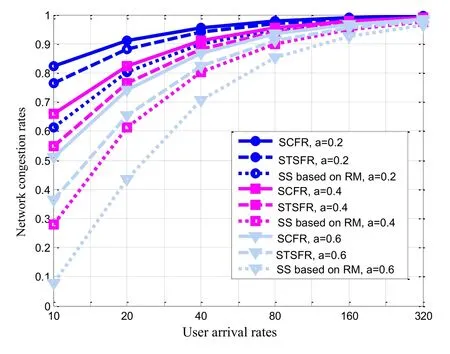
Figure 5. Network congestion rates of CN-STSSN against various user arrival rates.
In terms of user waiting probability, simulation result shows that the proposed method has the best performance.As the average service rate increase, the user waiting probabilities of the three schemes all have a certain degree of decline.As the user arrival rate increase, user waiting probability of three algorithms rises.The user waiting probability of the soft frequency reuse strategy is lower than that of the traditional seven-color frequency reuse scheme.However,the proposed spectrum management scheme has the lowest user waiting probability.When the user density in CB-STSSN is high, proposed spectrum management can perform spectrum prediction and beam prediction,which can effectively reduce the user waiting probability in a heavy-load network.According to the definition of ITU-RSM, spectrum utilization rate reflects the availability of spectrum resources per unit of time and space.Assuming the area isS, the area of each block isSi, the available frequency of each block isfi, the total time isT, and the time slotjisTj.Therefore,the spectrum utilization rate can be expressed as

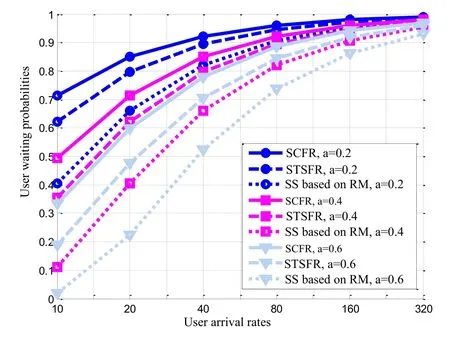
Figure 6. User waiting probabilities of CN-STSSN against various user arrival rates.
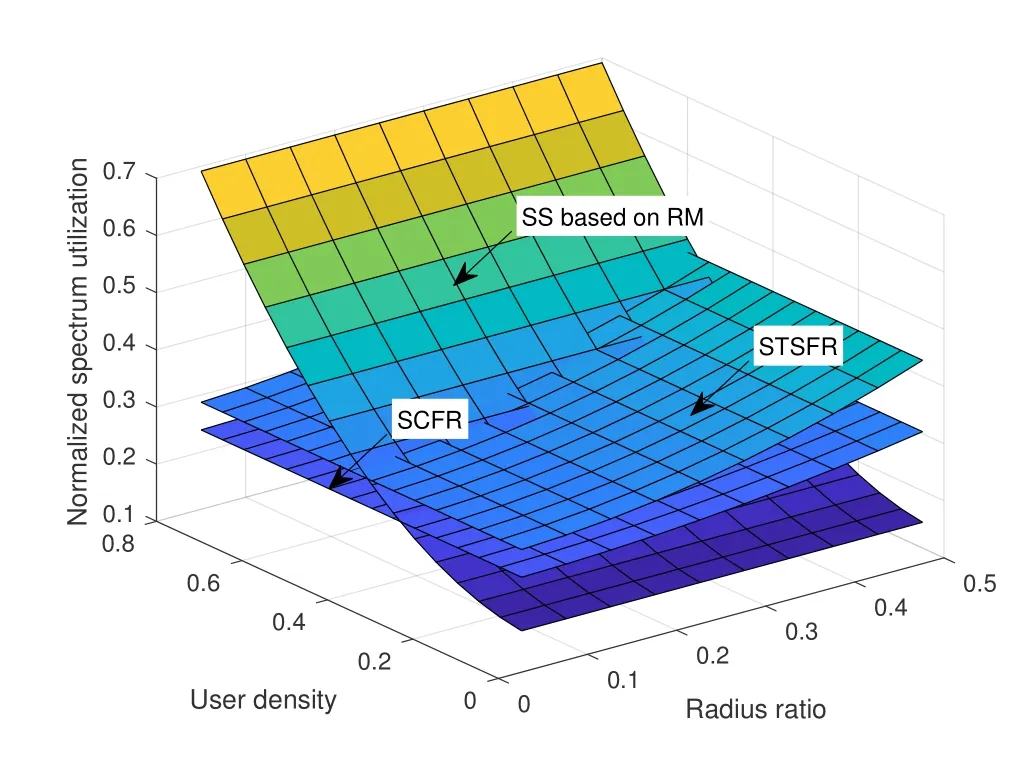
Figure 7. Performance of intelligent spectrum management in CB-STSSN.
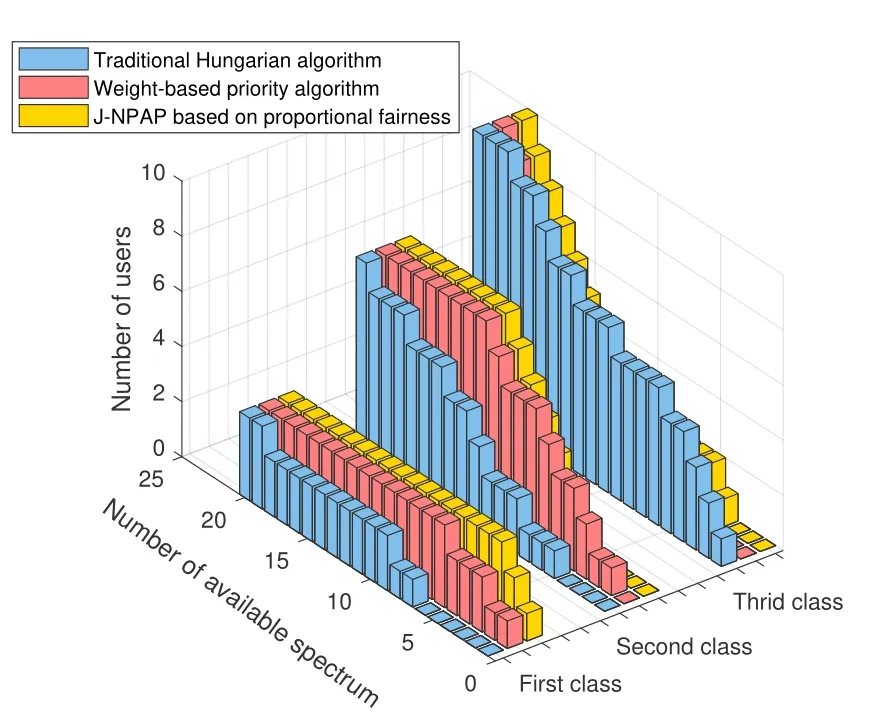
Figure 8. The access number of different priorities against various number of available channels.
Compared with the spectrum allocation scheme in traditional networks and the static spectrum sharing scheme based on soft frequency reuse,this paper evaluates the normalized spectrum utilization rate of the intelligent resource management in CB-STSSN.In Figure 7.In traditional networks, satellites systems usually adopt seven-color reuse and terrestrial systems adopt soft frequency reuse.Compared with traditional networks,the CB-STSSN architecture is able to share the spectrum between satellite and terrestrial networks effectively, which has been shown to be beneficial in increasing spectrum utilization.As the radius ratio of the beam center and the beam increases,the coverage with six sub-bands reused increases.Thus, the spectrum utilization rate of both intelligent resource management and static spectrum sharing schemes based on soft frequency reuse increases.In addition, the spectrum utilization rate of the proposed scheme can adapt to the user density.As the user density increases,spectrum utilization of the proposed scheme performs better than the static spectrum sharing scheme,which ensures that the BBU can effectively and efficiently use the frequency spectrum of a satellite or terrestrial system to realize dynamic spectrum sharing.The spectrum utilization rate of the proposed scheme increases slightly with the increase in user density.When the traffic loads are low, the spectrum utilization rate of the proposed scheme in CB-STSSN is relatively low.Therefore,intelligent spectrum management can selfadaptively share the available spectrum in CB-STSSN according to the user density.In contrast,the spectrum utilization rate of the static spectrum sharing scheme remains the same.The simulation results show that only the channel condition is considered in the traditional Hungarian algorithm, and the priority is ignored.Because the number of lower priority users is higher than that of higher priority users, the number of lower priority users with good channel conditions is higher than that of higher priority users.Therefore, more low-priority users are allocated resources in heavy-load networks.Moreover, the weighted priority algorithm increases the weight of high-priority users in the process of resource allocation.However,it still cannot guarantee the preemptive priority of firstclass users.Meanwhile, considering that the number of third-class users is large and the user arrival rate is higher, J-NPAP based on proportional fairness algorithm can access a part of third-class users that have not been served for a long time based on proportional fair algorithm.Therefore,it can be avoided that users repeatedly apply for access to the network due to the long waiting time of the third-class users, which will further increase the collision probability of the system and decrease the throughput.According to simulation and theoretical derivation results, the average waiting time for the second and third-class users is related to the parameter N.Whenn < N, the J-NPAP model falls back to the traditional priority model.Therefore,we can compromise the network congestion rate and the priority of second-class users relative to third-class users by adjusting the parameter N.Whenn ∈[1,N],the second-class users have non-preemptive priority.Whenn ≤N,J-NPAP priority model is equal to the traditional priority model.
V.CONCLUSION
For spectrum integration of CB-STSSN, intelligent spectrum management based on radio map including beam prediction, spectrum prediction and spectrum allocation in BBU is proposed in this paper to realize the hierarchical spectrum management from satellite beams, terrestrial cells to users.LSTM based BP and transfer learning-based SP with fine-tuning is proposed to proactively predict future spectrum status.Based on this, J-NPAP spectrum allocation scheme based on N-policy is proposed to achieve muti-class specrum allocation with priority.Compared with existing spectrum sharing schemes, e.g., seven-color reuse scheme and soft frequency reuse scheme, the proposed scheme can realize spectrum allocation with priority relying on BP and SP results from the radio environment map.The simulation results show that the proposed scheme can reduce the blocking rate and user waiting probability and improve the spectrum utilization rate.
ACKNOWLEDGEMENT
This work was supported by the National Natural Science Foundation of China under Grants 61771163, the Natural Science Foundation for Outstanding Young Scholars of Heilongjiang Province under Grant YQ2020F001, the Science and Technology on Communication Networks Laboratory under Grants SXX19641X072 and SXX18641X028.(Correspondence author: Min Jia)
- China Communications的其它文章
- An Overview of Wireless Communication Technology Using Deep Learning
- Relay-Assisted Secure Short-Packet Transmission in Cognitive IoT with Spectrum Sensing
- Frequency-Hopping Frequency Reconnaissance and Prediction for Non-cooperative Communication Network
- Passive Localization of Multiple Sources Using Joint RSS and AOA Measurements in Spectrum Sharing System
- Specific Emitter Identification for IoT Devices Based on Deep Residual Shrinkage Networks
- Primary User Adversarial Attacks on Deep Learning-Based Spectrum Sensing and the Defense Method

